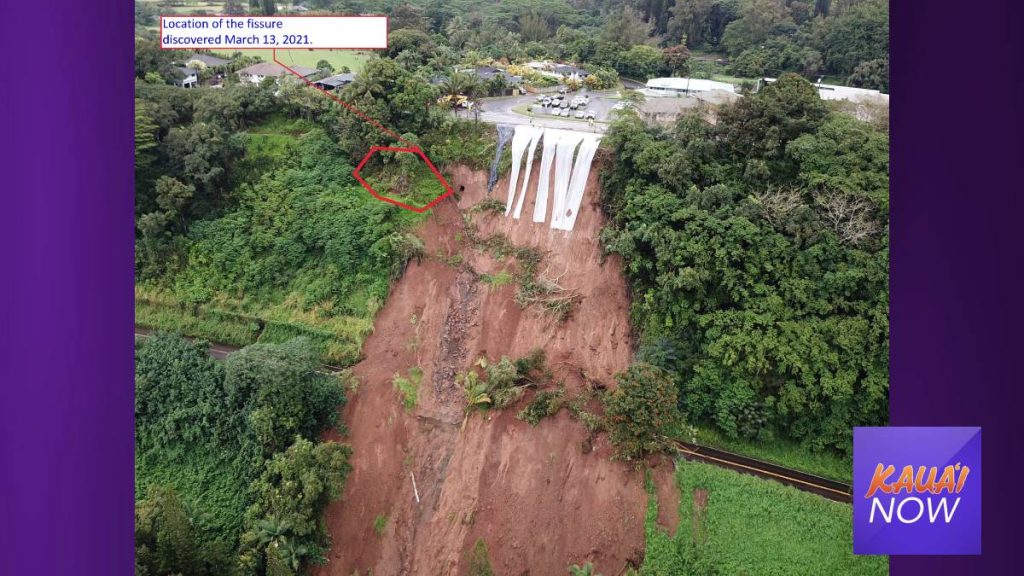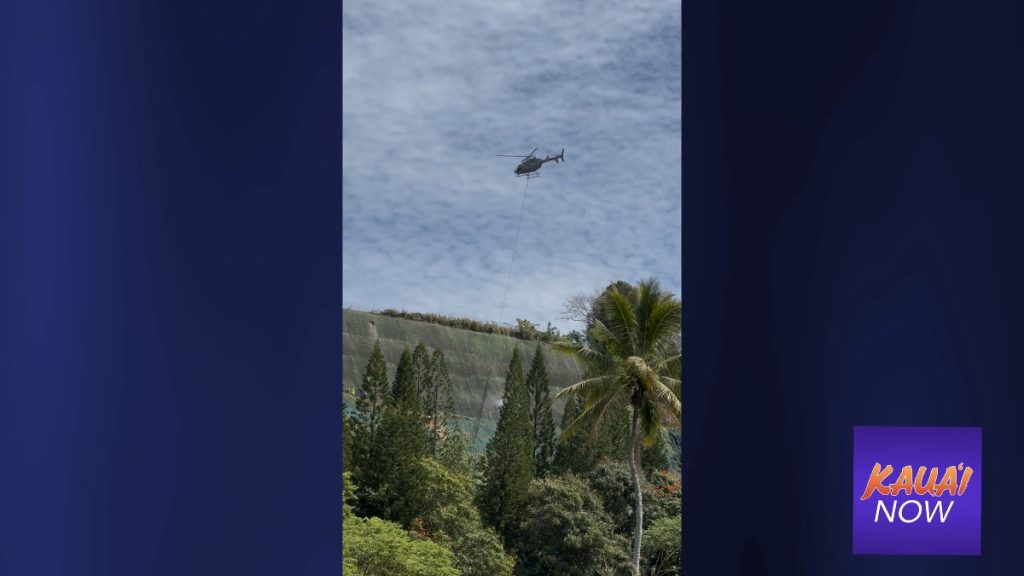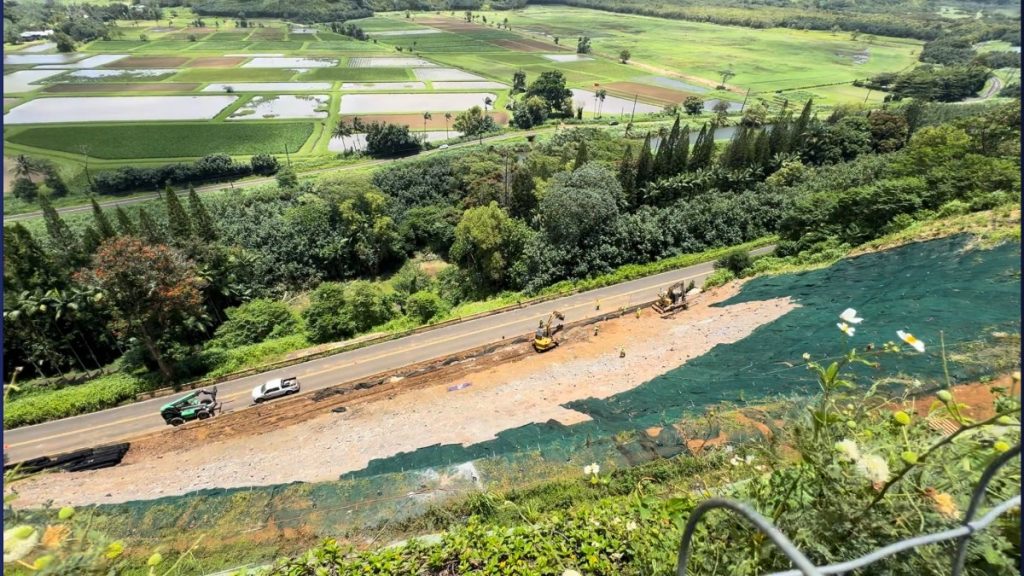State completes $24 million project to secure landslide-prone Hanalei Hill on Kauaʻi

After a four-year effort, the project to stabilize the slope at Hanalei Hill and make one of Kaua‘i’s most vulnerable roadways safe is finally finished, the Hawaiʻi Department of Transportation said.
The massive project began after the 2021 landslide across Kūhiō Highway severed access to the North Shore. “Emergency repairs cost $15.3 million,” said Shelly Kunishige, communications manager with the Hawai’i Department of Transportation.
The department also stated that the permanent work cost a total of $24 million, with 80 percent of the cost covered by federal funding.
The construction work was designed to prevent a repeat of the March 2021 slope failure that sent debris crashing onto Kūhiō Highway and forced weeks of restricted travel into the North Shore.
The project, finished in late September, advanced through three main phases.
Phase 1 was completed in October 2021 and addressed emergency stabilization needs after landslides occurred on March 9 and 11 of that year. Construction crews constructed a shotcrete wall, created by spraying concrete at high velocity onto a surface.
The crews also installed more than 500 soil nails extending up to 40 feet into the hillside, rebuilt sections of the highway, and removed more than 80,000 tons of debris.

Phase 2, which began in August 2023, proved to be the most technically and logistically demanding, transportation officials said.
Workers had to reinforce the lower slope while minimizing single-lane closures on a highway that is the only land access route to the small town of Hanalei.
“We understand how much this community has been impacted with all of the flooding and landslides and subsequent road closures,” said Shelly Kunishige.
“Being sensitive to that was the most challenging, but the community was very gracious during this time.”
Phase 2 added more than 800 additional soil nails and installed anchored wire mesh across the steepest sections. Night work helped reduce traffic disruptions, though some tasks — including helicopter airlifts of netting — could only be done in daylight for safety reasons.

Phase 3 centered on securing the slope face with mesh and re-routing hillside water into new pipes that now carry runoff directly to the Hanalei River near the historic bridge.
“The slopes above and below the road were stabilized,” added Kunishige. “At Hanalei Hill, the slope supports the road before the switchback.”
“Drainage improvements above the slope and coming down the slope face capture water coming out of the old irrigation tunnel, which was discovered during the Emergency event back in 2021. This irrigation tunnel was one of the main causes of the initial landslide event.ʻ
“The water is now being captured and being piped down to the Hanalei River.,” she said.
Between July 8 and Sept. 12, the department conducted full-time nighttime closures of Kūhiō Highway between Hanalei Plantation Road and ʻŌhiki Road for road paving.
The repavement of Hanalei Hill was completed, along with permanent striping, drain work, guardrails, and planting in late September. It was the last part of the long project.
Hanalei resident Robert Pa said he was thankful the work was finally completed, but is unsure how properly stabilized Hanalei Hill really is.
“I see the work that is done, and it looks good, but what about the right and left side that doesn’t have the concrete and the mesh on it?” he said. “I think there is more work to be done.”
Paul Jetton, assistant manager at Postcards Cafe, said: “It’s definitely nice to have access and not have the daily shutdowns of the one-way streets that were going on for a long while. And, it’s definitely increased traffic in Hanalei as a whole.”
He thinks more visitors are willing to come to Hanalei now that they donʻt have to deal with construction delays. But further north, construction continues on the final stages of the Waikoko Slope Stabilization Project.
Completion of the Hanalei Hill slope stabilization, which includes the Waikoko slope, was supposed to be completed this month; however, “there was an existing failed storm drain that was uncovered during construction and will need to be restored,” said Kunishigue. “We anticipate this work to be completed by the end of January 2026.”



